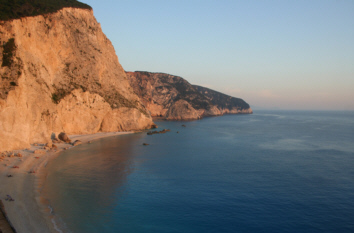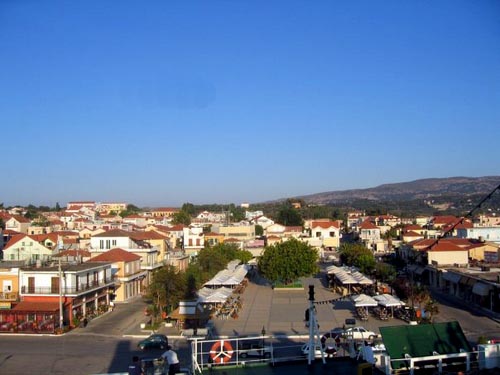 Kefalonia Guide
Kefalonia Guide  Lixouri
Lixouri
Welcome to
the Kefalonia Travel Guide.
It is a fully updated guide to all matters relating to this beautiful island Kefalonia in
the Ionian
Sea. Find information about the history of the island and about all the
areas of interest for the tourist
Lixouri
Lixouri is the second largest town on the island and the capital the municipality of Palikis. Lixouri is otherwise known as "little Paris", it is a town that has it all, combining both the entertainment and leisure. The town has a library and several notable monasteries that are worth a visit, such as the monastery in Kypouria.It is a place that has contrasting landscapes, on one side you have the bay of ‘Livadi’ which faces Argostoli, where the waters are calm and the gentle landscape is a complete contrast to the western side where the beaches have wild beauty with steep rocky slopes and turbulent waters. It is a place worth going to, either to stay for your holiday or just a visit while you’re on the island.
Andreas Laskaratos
The statue of the satirical poet Andreas Laskaratou is one of the features that attract attention on the beach of Lixouri, built by the sculptor Thanasi Quorum. Andreas Typaldos Laskaratos was born in 1811, he was a descendant of a wealthy and aristocratic family giving him the opportunity to be educated well. He learnt ancient Greek and Italian and also studied law at the Ionian Academy, where he met Andrea Calvi and Dionysios Solomos. He continued his studies in Paris in 1839 and graduated from the University of Pisa. During his studies he met Lord Byron
In 1840 he returned to the island and began to practise law. He was later appointed judge in Lixouri, a position that did not fit well with his restless spirit and so he resigned quickly. He married the lovely Penelope Korgialenia and then left the island in 1850 to go to London. He was there for two years, but he never forgot his darling island. In 1856 his work was published ‘The mysteries of Kefalonia’ which caused many reactions leading to excommunication from the Church. So he went to Zakynthos, where a newspaper gives the «Lichnos» and after the first edition was published it generated such reactions that he was arrested and imprisoned for four months.
In
1867 he finally returned to the island where he was in danger of being imprisoned
again, but he was saved by a letter sent to the king. In 1873 he became an honorary
member of the Byron Society and in 1877 had an association of Parnassus. A few years later he
was acquitted by Doriza of the Saint Gerasimos Church and the excommunication
was lifted. On 25 July 1901 at the age of 90 he
died in Argostoli receiving a standard funeral.
Today the statue of the poet with his liberal and critical caustic style adorns
the beach in Lixouri to remind everyone that there are people who do not accept
compromises and in the end succeed. The estate and house where he lived stood
on a hill in Lixouri which is now known as ‘Laskaratou Hill’. The original house
was destroyed in 1867 by an earthquake that struck the island and has left only
ruins belonging to a smaller building.



















